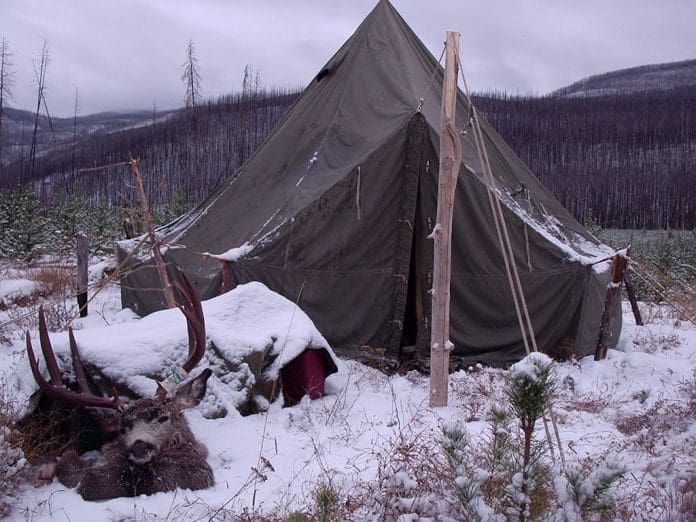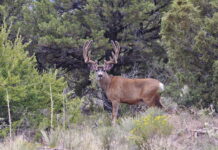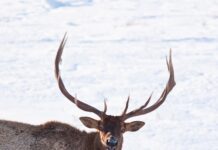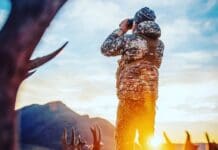Don’t Forget Your Short Game!
By Robby Denning
The rise of the long-range hunter is evident everywhere in the hunting world: shooting schools teaching long-range proficiency to 1000 yards, entire TV shows dedicated to long-range hunting, and specialty long-range rifles and equipment becoming main stream. It seems these days that if you can’t tip over a buck at 600 yards, you’re old-school.
Truthfully, I’m not against the rise of the long-range cult. There have been several times, twice to be exact, in my nearly 30-year mule deer hunting career where 400+ yard shots were necessary. However, I’ve taken most of my rifle bucks between 30 and 300 yards with the average at 151 yards. That’s 12 good bucks with an average age of five years (I lab-age all my bucks) and several of them over 224 inches. Many of them were taken with quick shots, with no time for range estimation or even to secure a good rest. I just had to judge their size and shoot.
While all of us should be practicing at 300-600+ yards, statistically speaking, you’ll kill most big bucks at ranges closer than that. Why? There are several reasons:
1)Unless you’re consistently pulling great tags with very few hunters in the field, the big bucks will be in the cover after opening morning (often before), even during rut hunts. If a big buck lives the entire hunting season in the cover, you’re only going to kill him in there and your shots will be short, often less than 100 yards.
2)Big mature bucks are masters at using even open terrain to their advantage. You might spot him at a mile across the canyon, but trust me, he’ll often bed in a place where he can only be seen from 100 yards or less by using the terrain to his advantage. You’ll have to get in his living room to kill him.
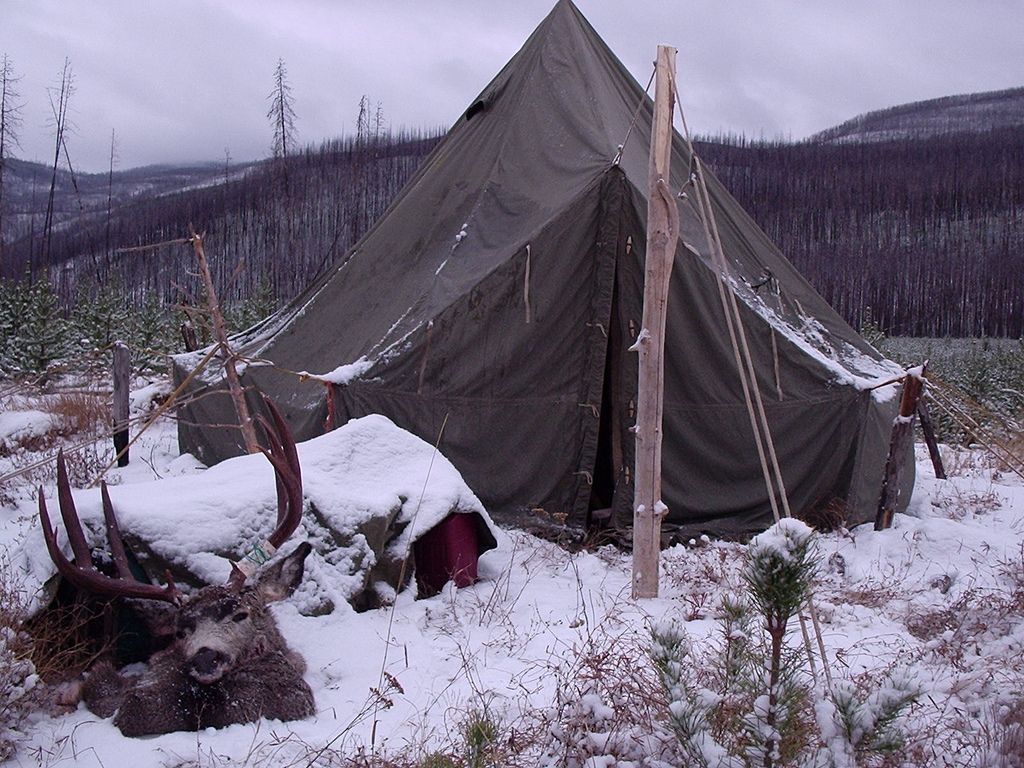
I killed this heavy Montana buck at close range while still-hunting some heavy timber where I’d found numerous rubs a few days before. He gave me one quick shot and luckily that was all it took.
2005 began with excitement for me. After several mild winters in the mountain west, buck numbers were improving. Sure enough, one August morning while scouting in Western Wyoming, I found a great buck. He was a 9×7 non-typical with a 30” spread and a great typical frame pushing 200”. He lived on a mountainside that was a mixture of open sage and thick timber.
If you’ve hunted Wyoming’s general seasons, you know how many hunters there can be, so I worked hard to pattern the buck through August so I’d have every advantage possible.
Archery season opened on September 1st and by the 3rd, I had him at 45 yards but couldn’t pull the shot off due to another buck in the way. He never winded me, but knew something was up and disappeared into the timber. I searched for several more days with no luck.
September 15th, opening day of rifle, found me glassing the same mountainside as a stiff breeze swept across the slope. Shortly before sunrise, I spotted him at the edge of a strip of timber, maybe 10 yards into the open sage. Seconds later, several shots rang out across the canyon. The buck instantly became nervous.
I had him at 460 yards according to my rangefinder. Quickly laying my 7mm magnum across my pack, I settled the crosshairs at his backline, but he wouldn’t hold still; jittery at the all the shooting across the canyon. As he disappeared in the timber, I knew this might be the last time I’d ever see him. For five days I stalked that mountain and sure enough, he was hid for the season.
Several weeks later, I was back. There were only three more days to hunt and I had to try one more time. Snow had arrived and I found several of the bucks, including a 180 gross, 30-inch wide buck the giant had been with in September. As dark arrived with no sign of him and only one more day to hunt, I knew I had to get in the timber if I was going to kill him.
The mountain was fogged in the next morning and my tiny weather radio promised a blizzard was on its way. Riding my saddle horse Rain over the mountaintop, the snow was already knee-deep.
By noon, I’d hunted the timber strips on top and was dropping down 500 feet to the thicker timber below when I cut two sets of tracks. During my close encounter during the archery season, I’d noted that the giant sported a big track: blunt on the ends, very blocky and about 3.25” long and nearly that wide. The track in the snow matched the one from September and the second set indicated a good buck as well.
I slowed way down and picked my way through the timber and fog. If I were hunting wide-open buck country, I would be wasting time as the fog only allowed less than a 100 yards visibility at best. Binoculars were worthless. Hunting the cover, though, the fog was my ally, masking my form and making the woods ultra-quiet.
About a quarter-mile into my tracking job, the fog thinned enough I could see about 80 yards across a small opening in the timber. Under the boughs of a large spruce, I made out the wide frame of a bedded buck. Sinking slowly to my knees and bringing my rifle up, I stared hard hoping it was him. I soon made out the antlers; it was the 180” deer I’d seen the previous day. Without lifting my head, I scanned around through my scope at 4x.
Suddenly, the 180” deer stood and stared at me. The giant stepped in behind him and faced me, having been hid by the timber. In less than two seconds, I dropped the crosshairs to his brisket and fired, making the easy 80-yard shot.
As the blizzard set in I found him piled up 150 yards down the snowy mountain on his back, his antlers stuck in the earth. I rolled him over and could see he was everything I’d thought him to be. I knelt and thanked the good Lord for His hand on this hunt, and my life.
Thinking back, I was reminded that had I only hunted the wide-open, long-shot country, I would have never taken that buck. He survived by staying in the timber where only a close shot could bring him down. That opening-day, 460-yard shot opportunity was a poor one, and I likely would have missed or wounded him. In the real world of big-buck hunting on public land, there’s often little time to prepare for long shots. So how does a guy prepare for hunting bucks up close, the short game as I call it?
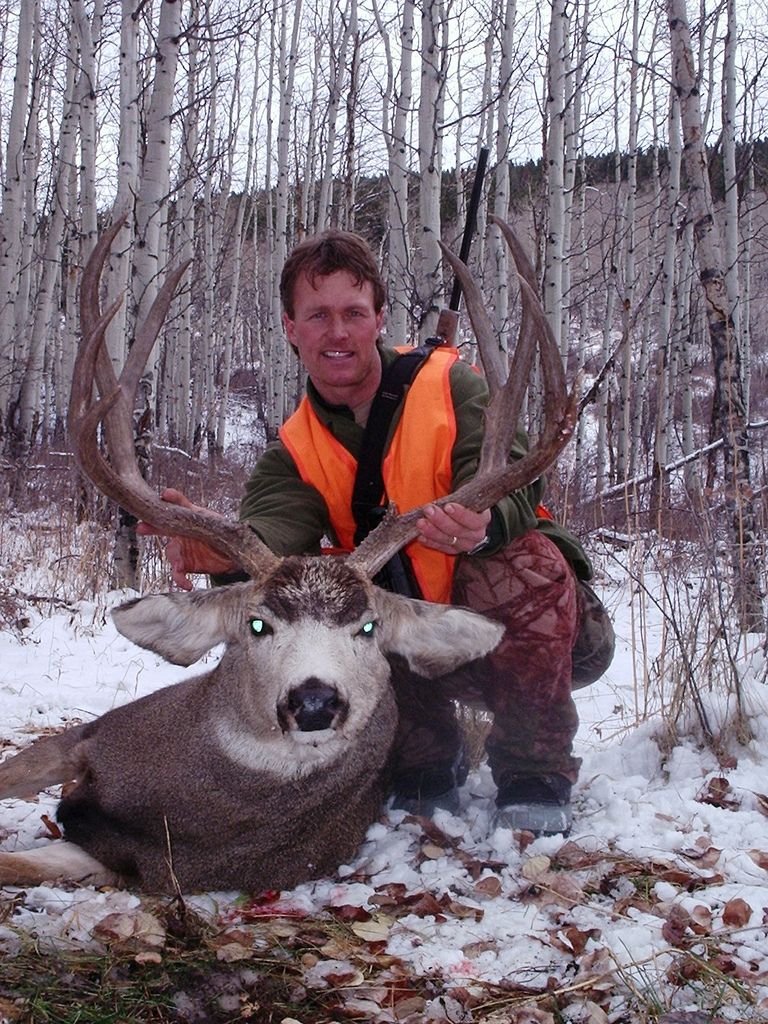
I took this heavy Colorado buck at 70 yards while pussyfooting through the cover one opening day.
Most importantly, a hunter has to overcome any bias against hunting the cover. I talk to buck hunters all the time who say they hate still-hunting and prefer glassing and long shots. Fine, but they are likely limiting themselves to immature bucks that haven’t learned the open country on public land is a dangerous place as the big boys certainly have.
Hunt the open country the first several days relying on your optics. However, if you’re not seeing the mature bucks, figure out what cover they may be hiding in. I don’t just dive into brush and timber without evidence a big buck may be there; tracks, scouting that verified a shooter buck in the vicinity, trails leading from the open into the brush, or anything that narrows down where in the cover to hunt.
Once in the cover, learn to move slowly and quietly. That huge backpack with spotting scope, tripod, and survival gear for a week will be like hunting with an anvil chained to your ankle. If I only have my rifle and wool clothes, I can move quietly. I use a small fanny pack for gear. If it doesn’t fit in the pack, it doesn’t go.
Many hunters think moving slowly is walking a few steps, stopping walking a few steps, etc. Hardly. To overcome a buck’s senses in the cover, you must move 100 yards or less an hour and often that’s too fast. You have to control all the movement in your body like your head, torso, and arms. By controlling your movement and focusing, you may get a crack at a truly big deer. This brings up my next point.
In the open, big mature deer are inherently nervous. They watch constantly, and feed less as they must be on the lookout for you. Once in the protection of the cover, a buck is more relaxed to move about and feed as he knows most hunters won’t be in there. This gives a hunter moving slowly an edge at spotting him. I’ve been surprised as I sneak through the cover how a big deer will just get up and move around at mid-day, something they rarely do in the open.
Finally, be intimately familiar with your rifle’s particular function. By this, I mean how to kick your safety and scope covers off, how to shoulder your rifle with a lot of eye relief, all done quickly and quietly. Lightweight rifles with barrels in the 22 to 26-inch range are best for short range. Also, if you’re using a scope that adjusts to high power, drop it to the lowest power setting available, preferably around 4x before tiptoeing through the cover.
I use a lightweight rifle at eight pounds including the 2.5x-8x (11)-ounce scope—plenty for even long shots, but just right for close-in shots. The rifle also fits me well, and comes to my shoulder with no thought leaving me precious seconds to judge the buck I’m looking at.
If you want to become intimately familiar with your rifle, get off the benchrest and do some timed shooting at rolling tires and water jugs hidden in the brush.
For the tire, find a safe place where a partner can roll a tire in front of you without being anywhere near your line of fire. You can attach a target or just use a tire mounted on a wheel. The goal is to get 2-3 shots in the tire between 50-100 yards. Try this a dozen or more times and you’ll soon find that you don’t even have to think: safety’s off, scope covers are up, and you’re aquiring your target quickly through your scope.
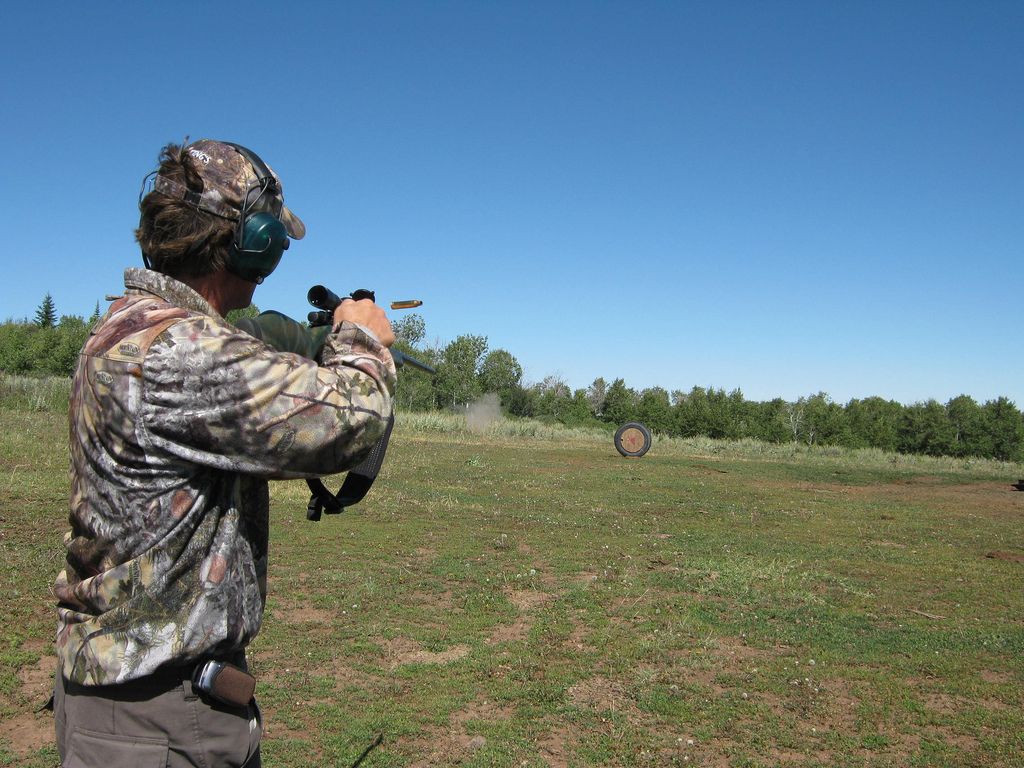
Shooting at rolling tires at 50-100 yards will get you in tune with the quick operation of your rilfe- a much needed skill for shooting bucks at close range.
For most guys, the first time I roll the tire, they don’t even shoot as they are fumbling with the safety or trying to repower the scope. A big buck would bound to safety in the seconds the shooter lost trying to get the cannon ready to fire.
You’ll also ferret out any chambering problems while quickly feeding a round for follow-up shots. If your gun won’t chamber quickly without any misfeeds, fix it, sell it, do something. Just don’t trust the buck of your life to a rifle that needs a machinist’s touch to chamber a round, even if it can bust a pumpkin at 1000 yards.
For the water jugs (use one-gallon milk jugs) you’ll need a partner, too. Have them hide the jugs in the brush where they can only be seen at a certain angles as you walk through the brush. After the jugs are set, walk through and watch for them. Once you see one, have them start counting the seconds between when you spot the jug and when you fire. The goal is to hit every jug within five seconds with one shot. The violent explosion of a hit leaves no question you’re on target, and it’s fun! Let me know if it improves your short game—it has mine.
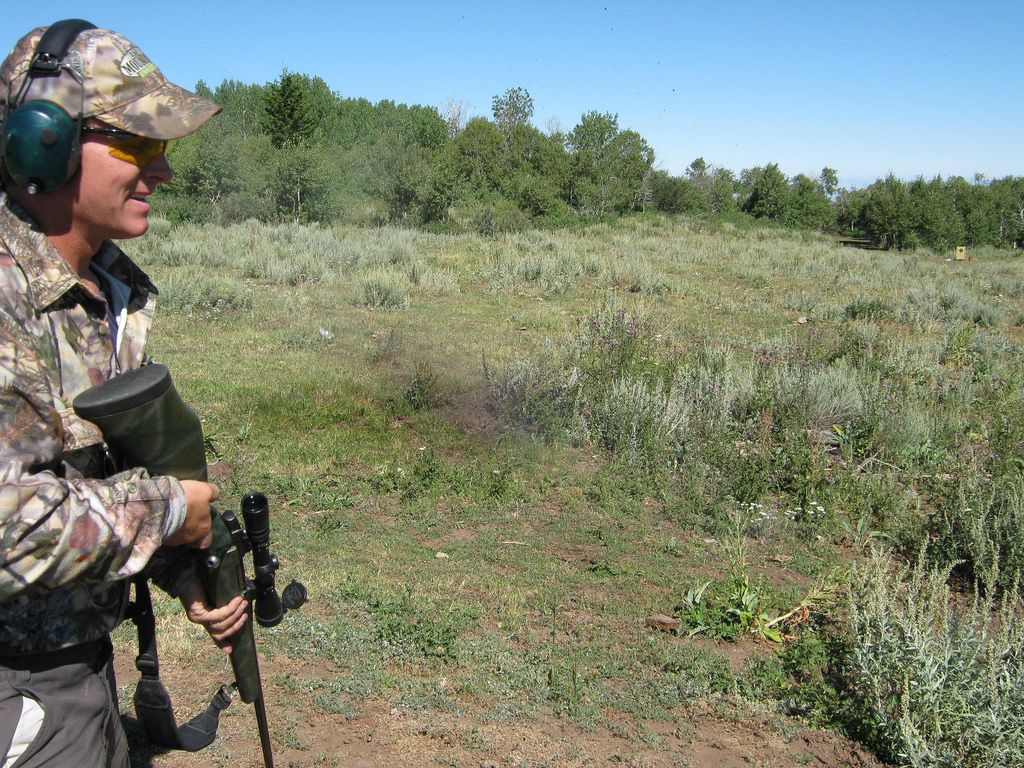
The mist in the center of the photo is what was left of a water-filled milk jug. Practice off hand shots at 50-100 yards and you’ll be better prepared for close range shots at big bucks.
The brush and timber of the West hold most of the big deer after opening day, where shots are short. Tune up your short game and be prepared.














